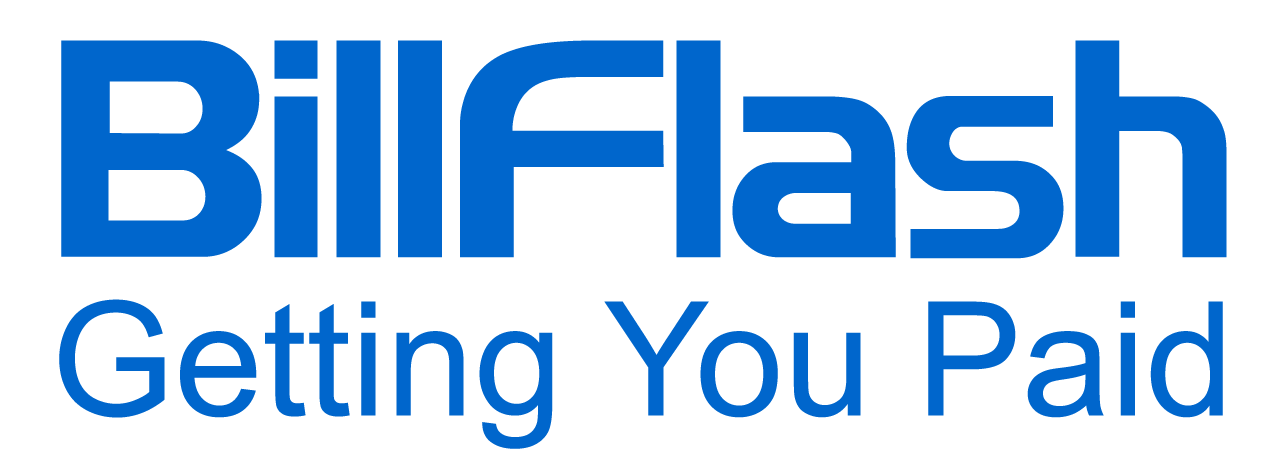Learn what drives the deductible rush, the challenges it brings, and how to implement a smarter billing strategy in your practice.
As the end of the calendar year gets closer, small and mid-sized healthcare practices face a familiar challenge that industry experts call the “deductible rush.” This surge happens every Q4, when patients are in a “rush” before their deductibles reset on January 1 of the next calendar year. This situation also calls for a smarter billing strategy. According to the KFF 2024 Employer Health Benefits Survey, the average annual deductible for single coverage was $1,787. This is a number that continues to rise, increasing financial responsibility for patients.
For practice leaders and billing staff, this season offers benefits and frustrations. Patients may feel motivated to pay for and receive care they have postponed. However, practices can quickly become overwhelmed by increased patient responsibility, patient questions, and additional administrative tasks. If your processes aren't ready for this rush, collections can easily fall behind, and staff can become overwhelmed with manual follow-up. Having a proactive billing strategy in place helps navigate these challenges and maximize collections during the deductible rush.
Today, we'll look at what drives the deductible rush, what challenges to expect, and how to implement strategies to help your practice collect more, work smarter, and finish the year strong. You'll also learn how BillFlash services can automate and streamline these processes, making the end of the year less stressful for your practice and patients.
What Is the Deductible Rush—and Why It's a Big Deal
Every fall, healthcare practices experience a surge in patient visits and billing. Patients who have met their deductibles, or want to maximize their benefits before they reset, are eager to schedule care, fill prescriptions, or use up FSA/HSA funds before they expire. This annual phenomenon is known as the “deductible rush.”
For many patients, especially those on high-deductible health plans, this window is the most cost-effective time to pursue elective procedures or address outstanding medical needs. At the same time, the health insurance open enrollment period creates challenges because patients may switch plans or update their coverage for the next year. This combination of urgency and uncertainty creates opportunities and risks for practices. Yes, it's a chance to collect more revenue; however, it is also a period when confusion about coverage, billing errors, and delayed statements can lead to missed payments and confused patients.
All of this makes the deductible rush a critical time for billing managers and practice leaders to have an efficient billing strategy in place. Preferably, one that can handle the key challenges that come along with this busy season.

Key Challenges Practices Face at Year-End
For small-to-mid-sized practices that may not have the resources of large health systems, here are some common challenges that can come along with the deductible rush:
1. Coverage Confusion During Open Enrollment
Open enrollment runs from November 1 to January 15 for Marketplace coverage. During this time, patients can switch plans, change deductibles, or choose new providers. Enrollment in Marketplace health plans reached an all-time high in 2025, with almost 24 million consumers selecting coverage during the latest open enrollment period. This is up from 21.4 million enrollees in 2024. However, this is often the time when many patients are unaware of changes to their insurance plans until claims are denied or bills arrive, which increases confusion and payment delays. This happens so often because plan details and coverage can change unexpectedly.
2. Increased Patient Volume and Limited Staff Time
As patients rush to use remaining benefits before expiration, office visits and outpatient services often increase in the fourth quarter. Similarly, holiday schedules and increased workload can stretch staff thin, making it harder to keep up with manual processes. This reinforces the need for a more effective billing strategy.
3. High Deductible Plans = More Out-of-Pocket Responsibility
According to KFF, nearly 27% of covered workers were enrolled in high-deductible health plans with a savings option in 2024. This meant larger bills for many patients, especially as the year drew to a close and they likely met their out-of-pocket maximums. When these types of situations occur, practices must be ready to communicate balances clearly and offer flexible payment options.
4. Manual Processes Can't Keep Up
Manual eligibility checks, paper statements, and phone reminders often fail to keep up with the demands of Q4. Any delay in these processes only increases the risk of bills being sent to patients after coverage changes. This can result in missed revenue and more frustrated patients.
5. Holiday Distractions and Delayed Payments
December is a busy month for everyone. When you factor in holiday travel, mail delays, and financial pressures, medical bills can be easily set aside unless your billing strategy is proactive and streamlined.
With these challenges in mind, let's explore a few practical strategies and integrated solutions that can help your practice maximize collections and maintain revenue during the deductible rush.

Billing Strategy Tips to Maximize Year-End Collections
To maximize Q4's billing opportunities, practices should use a combination of proactive communication, automation, and patient-friendly payment options. Here's how to create a billing strategy for the deductible rush and how BillFlash can streamline each step:
1. Verify Coverage and Communicate Early
With so many patients changing insurance during open enrollment, verifying benefits before every visit is a crucial part of your billing strategy. Train your front desk and billing staff to verify coverage and deductible status at each patient encounter. Proactively inform patients about upcoming plan changes and potential out-of-pocket costs. Clear communication early on prevents confusion and payment delays later.
2. Make Pre-Visit Payments Simple With BillFlash PreBill
After verifying coverage, the next key step in your billing strategy is to make sure patients understand their balance and offer them a simple way to pay before their appointment. If you can provide pre-visit estimates, you can help patients avoid sticker shock at the time of service. This makes them more likely to pay on time, reducing payment delays for your practice.
BillFlash PreBill makes it easy to collect patient fees in advance, preventing the need to chase payments after a visit. With PreBill, you can send a link via text or email, enabling patients to view their pre-visit charges online and make payments on PayWoot.com. This works for in-person and telehealth visits, and you can use it even before creating a formal bill. By streamlining the payment collection process before the visit, your practice can improve cash flow and reduce administrative burden.
3. Deliver Instant Digital Statements With BillFlash eBills
Once a visit is complete, fast billing is key, especially when patients are ready to pay before their deductibles reset. BillFlash eBills sent by text and email contain a link for patients to view and pay their bills at PayWoot.com. Whether a patient receives an eBill notice or a mailed bill (or both), they're directed to view and pay online through the portal, offering preferred billing and faster payments. BillFlash eBills generate online payments, reducing the hassle and cost of manually handling them in the office. Patients also benefit from easy access to current and past bills, which lowers support calls and questions to your staff.
4. Automate Follow-Ups With BillFlash PayReminders
Manual payment reminders require significant time and are often overlooked during the busy deductible rush. Automating this aspect of your billing strategy is more efficient and cost-effective. BillFlash PayReminders sends a series of electronic payment reminders via text and/or email at 7, 14, and 21 days after sending the initial statement. As soon as a patient makes a payment, the system automatically removes them from the PayReminders workflow. You can use the default settings or customize timing and content to fit your practice's needs, reducing excessive and unnecessary manual follow-up.
5. Flexible Payment Solutions: AutoPay and PlanPay
To further improve your billing strategy, maximize year-end collections, and enhance the payment experience for patients, implementing flexible payment options such as AutoPay and PlanPay is essential. AutoPay enables patients to set up automatic, recurring payments. This ensures timely and consistent payment of balances without the hassle of manual transactions each month. It also improves cash flow predictability for your practice and reduces missed or late payments. Meanwhile, when needed, PlanPay allows patients to set up automated payment plans, enabling them to make installment payments to the provider on a mutually agreed-upon schedule. Offering these patient-centric options helps your practice eliminate financial barriers, improve payment compliance, and strengthen patient relationships—all of which are vital during the high-demand deductible season.
6. Offer Flexible Financing With BillFlash FlexPay
Rising out-of-pocket costs can create significant barriers for patients and missed revenue for practices. BillFlash FlexPay enables providers to receive full payment immediately while patients pay their balance in affordable monthly installments. Patients can quickly apply for financing online (the application takes less than one minute to complete), and there is no hard credit check required. All approved patients are guaranteed a 0% interest option. With a 90% approval rate and a quick, simple application process, FlexPay makes care more accessible. This helps practices retain and attract patients who need flexible financing and payment plan options. PlanPay also allows approved payment plans for patients who need more flexibility, improving the likelihood of collecting balances before the end of the year.
7. Keep Accounts From Slipping Through With BillFlash Integrated Collection Services
Even with a proactive billing strategy and PayReminders, some accounts will not be paid in full. Integrated Collection Services from BillFlash allow you to manage all of your billing and collections in one place. Each practice sets its rules and approves which accounts need to be sent to integrated collections, maintaining full visibility and control. Collected payments are deposited directly into the practice's bank account, so you never wait weeks for payouts. Licensed recovery specialists speak with patients about the amounts they owe, offering payment plans when needed. This integrated approach promptly addresses overdue accounts, which becomes especially important as your practice shifts focus toward the new year.

How to Streamline Staff Workload During the Rush
As patient volume and billing demands increase, streamlining staff workload helps prevent burnout and ensures collections remain strong and consistent. The right combination of automation, clear communication, and smart prioritization can make all the difference in your billing strategy.
1. Automate Wherever Possible
Manual billing and follow-up processes can easily overwhelm staff during the Q4 rush. BillFlash automates statement delivery, payment reminders, financing options, and the tracking of overdue accounts, reducing the time your staff spends on repetitive tasks. Instead, they can have more time to focus on patients.
2. Use Data to Prioritize Collections
Real-time billing data lets you focus on the accounts that matter most. This includes high-value balances, patients with a strong payment history, or those at risk of falling behind. With BillFlash, you can easily identify and target these accounts with reports, maximizing your staff's impact and improving cash flow.
3. Prep Messaging and Statement Inserts in Advance
Don't wait until December to communicate important deadlines. Use PDF statement inserts, emails, and texts to inform patients about deductible resets, FSA/HSA expirations, and upcoming coverage changes. Some examples of messages you can include on statement inserts include:
- “Pay your balance before your deductible resets on January 1!”
- “Don't let your FSA/HSA funds expire. Take care of your bill today.”
- “Your insurance coverage may change soon; contact our office with questions.”
Don't Let Year-End Revenue Slip Away
With the right strategy and tools, you can maximize collections, minimize stress for your staff, and give patients a smoother billing experience before the calendar turns. By enhancing your billing strategy, adopting proactive communication, automating manual workflows, and providing flexible, patient-friendly payment options, your team can transform Q4 from a stressful period into your strongest quarter.
Get a head start on year-end success and schedule a demo with BillFlash! Discover how our all-in-one billing, payment, and collection platform helps you increase collections, streamline work, and improve patient experience.

